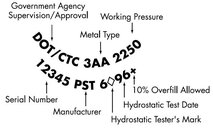So, lots of interesting input here. For me it is kind of simple. It's a tank, does it supply me enough breathing material to do what I wish? If not, there are two solutions:
1. get a bigger tank
2. jam more in it
one is a question of money, two is a question of capability and legality.
Some observations and opinions:
-If a shop, in today's market has a compressor that is unable to provide fills in excess of 3500 psi, I would wonder about the viability of that shop.
-My compressor, a Fluid Concepts model based on a Bauer Mariner, was built in 1989 as a 3500psi unit, but has since been upgraded (new 3rd stage head and valves) and includes protection mechanisms in place to stop at 4300 psi. Many Bauer compressors less than 30 years old can support such upgrade, and may require it as a part of normal maintenance. (My 3rd stage head was a requirement. LP Valves were no longer available)
-That said, with more and more HP tanks being filled, there is no doubt that the number of fills between valve replacements have gone down, indicating a higher level of wear and tear. My last ring replacement was at 1100 hours and I have 224 hours in the 2 years since then
- I run two boosters, one a repurposed Paintball booster for inert gases and less than 40%, and one dedicated to O2 over 40%. These are used to top off tri-mix blends and fill O2 takes for deco or rebreather use. Because they are air driven, they can do some draining on the air bank, but that is the cost of doing those blends.
- According to conversations with Bauer and other compressor people, startup is the hardest wear and tear on a compressor. That is the real value in having banks. Having added 6 more tanks to the cascade, I'll be curious to see how this works, but today, I rarely start my compressor that it doesn't run for a couple of hours.





